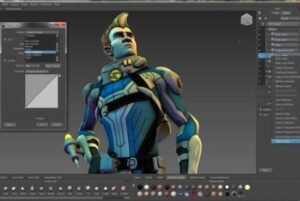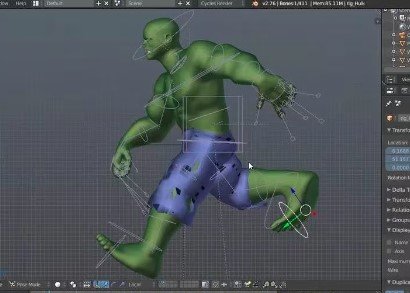3D Motion Graphics: Innovation, Techniques, and Applications
3D motion graphics have revolutionized the way we perceive visual content, offering dynamic and immersive experiences across various media. From film and television to advertising and virtual reality, 3D motion graphics bring static images to life, creating a powerful impact on audiences. This article delves into the intricacies of 3D motion graphics, exploring its innovative techniques, diverse applications, and the future of this ever-evolving field.

The Basics of 3D Motion Graphics
3D motion graphics combine the principles of 3D modeling, animation, and visual effects to create moving images that appear three-dimensional. Unlike traditional 2D graphics, which are flat and static, 3D motion graphics provide depth, realism, and dynamic movement, making them more engaging and visually appealing.
3D Modeling
The foundation of 3D motion graphics lies in 3D modeling, which involves creating a three-dimensional representation of any object or scene. This process uses specialized software like Autodesk Maya, Blender, or Cinema 4D to construct models from basic shapes (polygons) and refine them into detailed structures.
Animation
Once the models are created, the next step is animation, where these static models are given life. Animation involves manipulating the models to create the illusion of movement over time. This can range from simple transformations like rotation and scaling to complex character animations that mimic realistic human movements.
Texturing and Lighting
To enhance realism, 3D models are textured and lit. Texturing involves applying surface details like colors, patterns, and materials to the models, making them appear more lifelike. Lighting, on the other hand, simulates real-world light sources to add depth and shadows, enhancing the overall visual quality.
Rendering
The final step in creating 3D motion graphics is rendering. This process converts the 3D scenes into 2D images or video sequences. Rendering can be computationally intensive, often requiring powerful hardware and considerable time, especially for high-quality, photorealistic outputs.
Innovative Techniques in 3D Motion Graphics
The field of 3D graphics is constantly evolving, with new techniques and technologies pushing the boundaries of what is possible. Here are some of the most innovative techniques currently shaping the industry:
Procedural Animation
Procedural animation uses algorithms to automatically generate animation sequences, allowing for more complex and realistic movements without manual intervention. This technique is particularly useful for creating natural phenomena like fire, smoke, and water.
Motion Capture
Motion capture (mocap) involves recording the movements of real actors and translating them into digital animations. This technique is widely used in film and video games to achieve realistic character animations that closely mimic human actions.
Virtual Reality (VR) and Augmented Reality (AR)
VR and AR technologies are expanding the horizons of 3D motion graphics. VR provides fully immersive environments where users can interact with 3D graphics in real-time, while AR overlays 3D graphics onto the real world, enhancing the user’s perception and interaction with their surroundings.
Real-Time Rendering
Traditionally, rendering has been a time-consuming process, but advancements in real-time rendering are changing the game. Real-time rendering allows for instantaneous feedback and interaction with 3D graphics, making it ideal for applications in gaming, virtual production, and interactive simulations.
Applications of 3D Motion Graphics
The versatility of 3D graphics makes them applicable across a wide range of industries. Here are some key areas where 3D graphics are making a significant impact:
Film and Television
In the film and television industry, 3D graphics are used to create stunning visual effects, animated sequences, and realistic CGI characters. Blockbuster movies and TV shows often rely heavily on 3D motion graphics to bring fantastical worlds and characters to life.
Advertising and Marketing
3D graphics are a powerful tool in advertising and marketing, enabling brands to create eye-catching and memorable advertisements. From product visualizations to animated logos and explainer videos, 3D graphics help businesses communicate their messages effectively.
Video Games
The video game industry is one of the biggest beneficiaries of 3D motion graphics. Realistic 3D environments, character animations, and visual effects enhance gameplay experiences, making games more immersive and engaging for players.
Architecture and Design
Architects and designers use 3D graphics to create detailed visualizations of buildings and interior spaces. These visualizations help clients understand the design concepts and make informed decisions before construction begins.
Education and Training
3D graphics are increasingly being used in education and training to create interactive simulations and visualizations. These tools help learners grasp complex concepts and practice skills in a virtual environment, improving learning outcomes.
The Future of 3D Graphics
The future of 3D graphics is bright, with continuous advancements in technology promising even more exciting developments. As artificial intelligence (AI) and machine learning (ML) become more integrated into the workflow, we can expect more sophisticated animations and effects that require less manual intervention. Additionally, the increasing accessibility of 3D software and hardware will democratize the field, allowing more creators to explore and innovate.
In conclusion, 3D motion graphics are transforming the way we create and consume visual content. With their ability to captivate audiences and convey complex information, they are an invaluable asset in numerous industries. As technology continues to evolve, the possibilities for 3D motion graphics are limitless, promising a future filled with even more breathtaking and immersive visual experiences.



